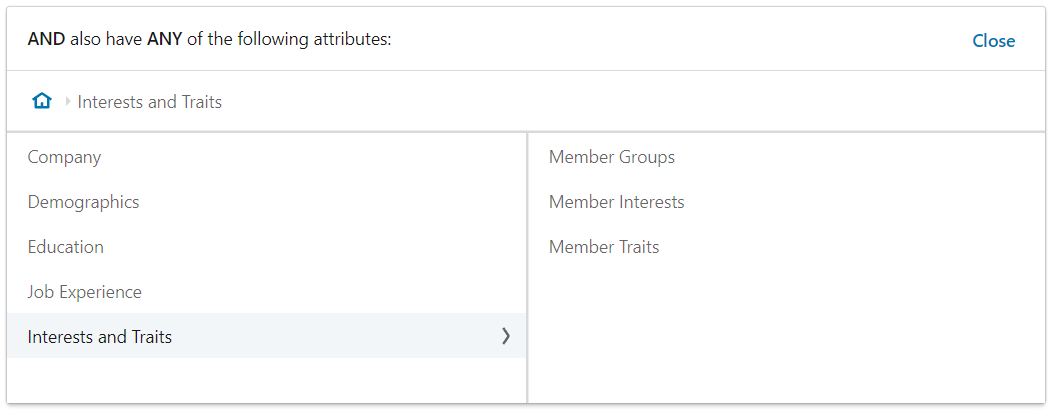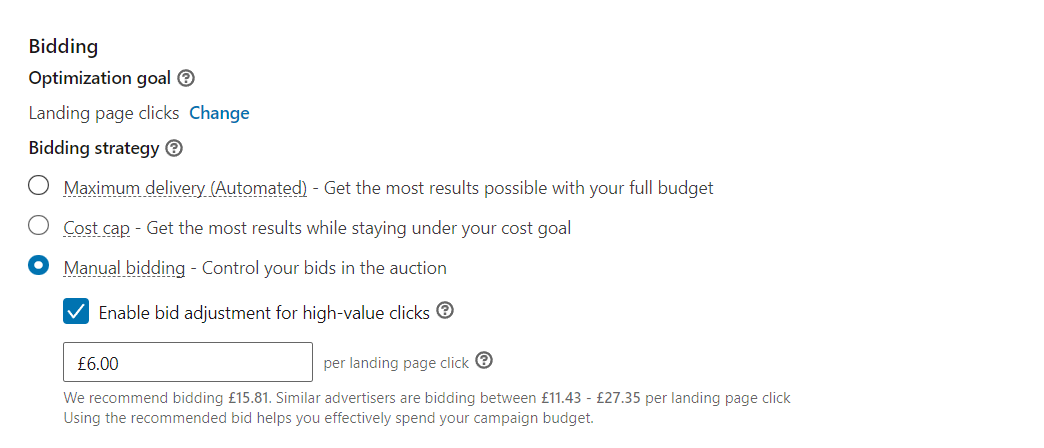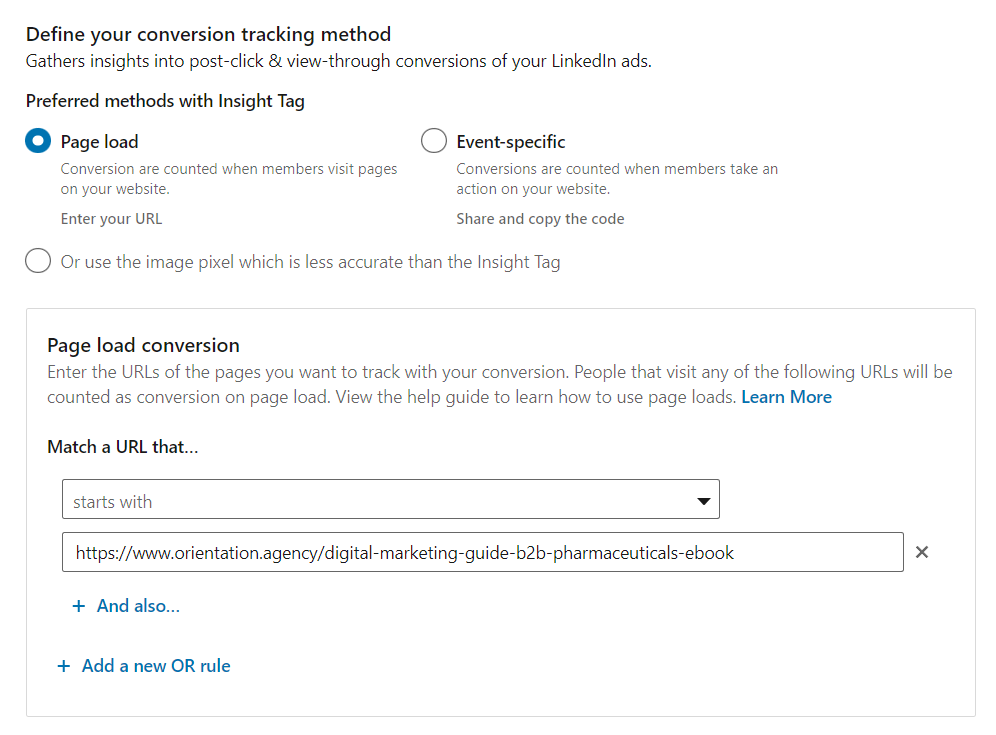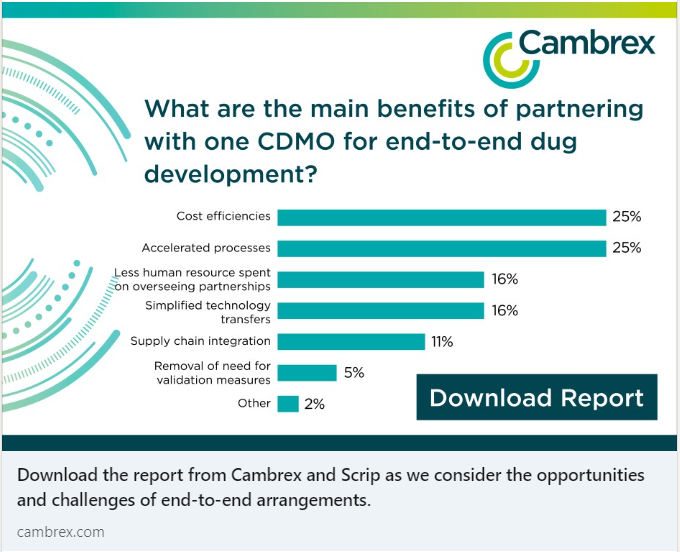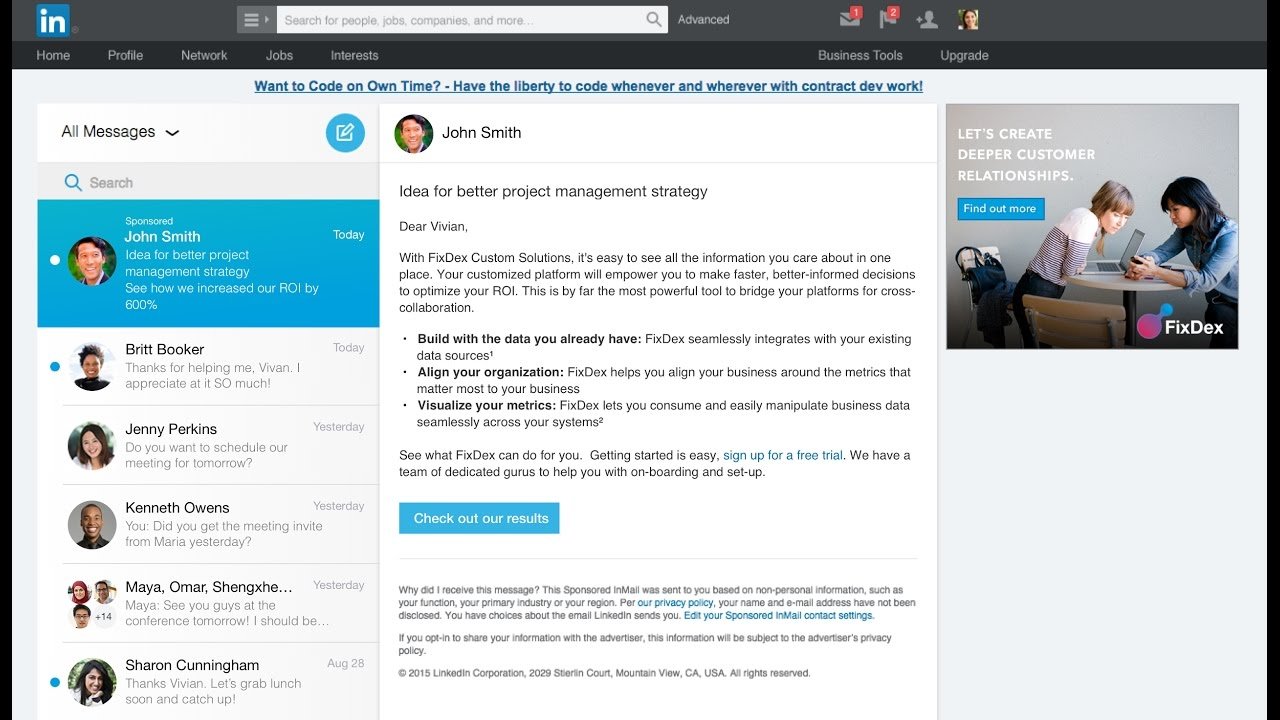LinkedIn Advertising in Pharma
The 12 steps for creating LinkedIn advertising (Sponsored Content) campaigns in B2B pharma.
As stated in a previous post on marketing pharmaceuticals using paid social:
“LinkedIn does not allow ads related to prescription pharmaceuticals, drugs or any related products or services. Ads that promote prescription or over-the-counter drugs, illegal drugs, highs, herbal medicines and treatments, psychoactive effects of substances, or aids to pass drug tests are all prohibited.” Therefore, we are faced with restrictions on the types of products and services we can advertise on LinkedIn in pharma. The advertising of any form of DTC drug or product would need to happen on an alternative advertising platform. This said, B2B pharma services and products can very much be advertised on LinkedIn, which is where this post will focus.
Subscribe for marketing insights via email
We find that LinkedIn encompasses a large audience of the appropriate decision-makers that our clients want to get in front of via our paid services. But creating such ads isn’t straightforward either. This post/guide is presented in a step-by-step format, to follow when creating LinkedIn advertising campaigns to reach a scientific audience.
Tips are provided at each step and are specifically designed for reaching audiences in pharma and have come from our learnings from running LinkedIn ads (and other pay-per-click campaigns) for our clients. Grab a coffee and let’s get going!
Sponsored LinkedIn Advertising in Pharma
The following steps will provide an overview of the process and best practices to create sponsored advertising content on LinkedIn in pharma.
1. Set the objectives - decide what you want to achieve
The majority of the campaigns you might run in the B2B pharma space will involve the advertising of some form of content, such as event details, scientific papers and product/service information. Objectives with the specific content piece in mind would need to be set before any advertising could take place. This is a highly important first step; spend some time deciding what you want LinkedIn to do for you (because LinkedIn advertising can achieve a range of things in B2B pharma), then set up the campaigns accordingly. It goes without saying that the content you are promoting needs to be tailored to your ideal customer persona; the audience we will be creating shortly.
Tip: We recommend doing some A/B testing with lead generation campaigns alongside your brand campaigns. Aim to run at least one Conversion campaign simultaneously with your Awareness or Consideration campaigns to maximise the potential of your LinkedIn advertising investment.
LinkedIn’s Objective options to best fit the goals of your campaign.
2. Segment via regions
Choosing the location where you want to serve your ads - and therefore advertise your pharma products and services - is the only mandatory step following the objective setting. Spend plenty of time deciding on the specific locations you want to target (and those that you don’t), deciding if you have enough budget to reach all those locations. Try splitting your campaigns by region: North American audience in one campaign and European audience in the other, for example.
Tip: It’s likely you’ll need to show your ads within multiple locations, be it in different cities, states, countries or continents. However, it’s best practice to create separate campaigns for these regions within the same Campaign Group. Always duplicate the campaign you have created - splitting the total budget accordingly - and create campaigns for regions that are notably different. You’ll find that the cost of reaching these geographic segments vary, as well as the responses to those ads, meaning that the audience may need to be treated differently in future. Segmenting this way will provide actionable data that can accurately inform your LinkedIn advertising initiatives.
LinkedIn’s location/geo targeting options feature in Campaign Manager.
3. Be specific about the targeting demographics
There are multiple criteria and methods for building your target audience. Some of the common methods are to target job titles or target specific companies (via an ABM approach), all of which are perfectly good for creating your advertising campaigns, but alone you might miss out on key audience members. Here, it pays to ensure we capture the entirety of our ideal target audience, by also being highly specific in doing so.
Tip: Building your targeting approach around seniority, industry and function (together) will ensure you target the right level of professional, in the right role and in the right sector. In this case, we’d suggest a reasonably senior level (to reach decision-makers), within the “Pharmaceuticals”, “Biotechnology” and/or “Medical Devices) industries and then the function of “Research”, “Operations” or “Healthcare Services.” This will ensure you are on the right track to reaching your pharma professional.
LinkedIn’s option to target via Job Seniorities.
4. Narrow the audience
By this point, you will likely see a substantial number in the “Target audience size” in the Forecasted Results - likely to be too large. LinkedIn will always try to increase the size of your audience so it can show your ads to more people (so your budget is used quicker). So, the strategic aim is to ensure that the audience is highly specific and suitable for the message and goals of your ads. We would do this by narrowing the audience down further. It pays to get yourself familiar will all of the targeting options available.
Tip: Combine demographics using the “AND also have ANY of the following attributes” feature (below) to add another layer of targeting to your campaign to ensure that you are in fact hitting the audience you aim to reach. Introducing Member Interests and Member Groups at this stage works well, as the content topic can often be searched in the search box and shown to us as audience characteristics, which can then be added to the campaign’s target criteria.
Tip: Once you have completed your audience criteria, hit “Save audience” so it can be reused or used as a basis for future campaigns or duplicated for our other regional segments.
LinkedIn’s option to target via Interests and Traits.
5. Narrow further via exclusions
(Do not skip this step!) Yes, we’ve just narrowed our audience to a very targeted segment that will likely respond positively to our ads. However, there are a number of demographics that we also need to exclude from our campaigns where we look to potentially reduce the audience size to an ideal 40-80,000 members.
Tip: At this point, review the Forecast Results sections and arrange them by Function to determine if there are any roles and functions which you want to exclude. (Even though we have only specified a few functions, LinkedIn will still try to show your ads to a wider audience. We find that Sales and Business Development functions can still be included here, but as in the majority of our own pharma campaigns we tend to focus on the scientific audiences, we would want to add these sales-based roles in the exclusions. Review each of the segment breakdowns to see if they fit your ideal target customer. If you don’t want them to see your LinkedIn advertising, add them to the exclusions.
Tip: Also, always exclude competitors and staff from your ads, by adding the company names in the exclusions. You don’t want to be wasting your budget on those who certainly won’t be buying from you.
Tip: Untick the “Enable Audience Expansion” option as this will only undo the good work you have just done - it is designed to increase clicks. We tend to only use this option if the campaigns need a boost. You would also want to untick the “LinkedIn Audience Network” option further down in the placements - we wouldn’t recommend advertising pharma products and services on LinkedIn’s sister platforms which include other apps and games.
LinkedIn’s Forecasted Results.
LinkedIn’s option to narrow the audience via exclusions.
6. Control your bidding
There are two options for bidding; you do it yourself or you let LinkedIn do it for you. As a guide, a minimum budget of 30 – 50GBP per day is healthy. Whilst it’s tempting to allow LinkedIn to do the bidding for you, perhaps if you don’t feel comfortable using some of the features of Campaign Manager, we would suggest that you have a go at setting the bid range for yourself.
Allowing LinkedIn to manage the bids for you using its AI engine (by selecting the “Maximum Reach” option) is great for product launches and promoting news pieces because it can quickly get the ad in front of more people, increasing reach. Of course, by doing this, you are outbidding those that are also looking to reach your audiences, meaning your budget is likely to be used quicker.
Tip: Use the “Manual bidding” option and keep bids at the suggested bid range, allowing you to control your budget but also giving LinkedIn a little bit of manoeuvrability if the AI feels it needs to intervene. Start on the lower side and if you feel you need to increase the bid, if you feel the ads aren’t generating enough impressions, you can do so easily. We always try to be efficient in the campaigns we manage to generate more clicks, views or leads within the budget.
LinkedIn’s Bidding options.
7. Enable conversion tracking
LinkedIn Campaign Manager also allows you to determine if your ads are creating user conversions on the website which you might be pointing your ads towards. Conversions might be button clicks, downloads or specific page visits, and all can be configured within LinkedIn and will be reported within the stats dashboard. To get started, the Insight Tag needs to be installed on the pages of your website that you want to track.
Measuring the actions members take on your website after clicking or viewing your LinkedIn ad is important so you can try to identify gaps in your ads and your website.
Tip: Enable conversion tracking to track conversions happening on external websites for better ROI measurement and traffic analysis.
Tip: Install the site-wide tag on your website that can attribute conversions on all your future LinkedIn advertising campaigns.
LinkedIn’s advanced tracking feature for defining a conversion on the website.
8. Ensure your creatives are to a professional standard
You will have already chosen your Ad Format (Single Image, Video etc.) earlier on when defining the objective, though, whatever the format, ensure that the creatives you use within your ads are professionally designed. As WebFX states: “When you’re creating LinkedIn ads, you must ensure that your ads are professional and error-free before publishing. LinkedIn is a professional networking site. It’s crucial that you deliver an ad copy that is extremely clean and error-free. You’re trying to network with professionals, so you must create a polished presentation of your ad.” This is especially the case with the meticulous and highly-thorough pharma audience we are looking to reach.
Tip: Ensure that the images on your single image ads contain some text to make your content more engaging to your target audience.
Cambrex LinkedIn ad example.
9. Create multiple ads for A/B testing
We always recommend A/B testing LinkedIn advertising campaigns in pharma. Multiple ads mean we can identify which images, copy and CTA variations generate the highest click-through rates. As a guide, the CTR benchmark is at 0.35-0.5%, with the view-through rate at 26-36% for video ads. Also, be aware that an audience member can see one unique creative from an advertiser every 12 hours; more creatives also mean we bypass this time limit.
Tip: Get into the habit of manually A/B testing different ad versions. Create 3/6 ads (depending on your budget) per campaign and ensure ads rotation is set to “Rotate ads evenly” (accessed by clicking on the settings/gear icon beside “Ads in this campaign”). This will mean that you will show different variations of your ads to your audience, increasing the likelihood of those taking action, as well as being able to identify the highest performing ads, pausing the poor performing ones.
Cambrex LinkedIn ad series example.
10. Configuring lead generation forms
Building lead generation forms is often the most difficult step when catering our LinkedIn advertising to a pharma audience. Mainly, because our scientific audience doesn’t always want to engage with sales and marketing activities, which includes handing over personal data to marketers via forms. But this certainly doesn’t mean that they’ll not do so and this also certainly doesn’t mean that you shouldn’t ask for that data if your content is good enough. Spend some time configuring the forms.
Tip: When creating your lead generation form, make sure to provide information in the “offer details” section and add “business/work email” as a question, removing “email” as a pre-populated profile information question. You likely don’t want to gain the email address - often a personal one - that the user has used to create their LinkedIn profile.
Tip: Follow conversion optimisation best practices and do not exceed 4 form/question fields within a form.
Cambrex LinkedIn lead generation form example.
11. Review the campaign demographics
As with any marketing campaign, you will need to review the performance of the ads to understand what worked, and what didn’t, that can help determine ROI and inform future pharma advertising campaigns. You’ll be given accumulative data, such as Impressions, Clicks and Cost per click (CPC) via the dashboard, however, the demographics report provides an in-depth and highly valuable additional overview of the stats for the various demographics options which we selected earlier. This kind of data is often never provided on third-party advertising platforms, but as LinkedIn is a networking platform and has gained that data from its users, it makes it available for advertisers.
Tip: “Once your campaign has accumulated enough data, click the Demographics tab in Campaign Manager. You’ll see detailed information (such as job title, job seniority, industry, and more) about the professionals who clicked and converted on your ads. Use these insights to inform your content, targeting, segmentation, and testing.” (LinkedIn Marketing Solutions)
Tip: Study this data closely - it’s a rare opportunity to be given it.
LinkedIn’s ad Demographics report feature.
12. Try In-Mail (with caution) alongside Sponsored Content
This post focuses on Sponsored Content and doesn’t focus on Text Ads or Sponsored In-Mails, which are two of LinkedIn’s other advertising options. For a pharma audience, we would potentially suggest using - or at least testing - some InMail campaigns.
As we alluded to previously, mixing brand awareness and lead generation campaigns can increase the effectiveness of your LinkedIn advertising investment; the boost in effectiveness from using multiple channels is undeniable. (LinkedIn suggests that by doing similar with Sponsored Content and InMail, approximately a 25% increase in open rates and a 95% increase in CTRs can be achieved.)
Tip: Run Sponsored InMail campaigns alongside one of your Sponsored Content campaigns as a test. Select a small audience demographic (which is included in your main targeting criteria) to do so with a non-intrusive and friendly message. Pharma event invites are good for this purpose.
Tip: Don’t do this too often! Scientists do not want your salespeople spamming their LinkedIn inboxes.
LinkedIn Sponsored InMail example.
LinkedIn advertising best practices in pharma…
As we alluded to, B2B pharma marketers can use LinkedIn’s Sponsored Content features to reach their personas and target market very efficiently and effectively. It truly is a great platform for doing so. B2C marketers, on the other hand, will find it difficult due to the platform’s advertising policies. Regardless, LinkedIn is a great platform for reaching pharma professionals - use the best practices, steps and tips in this post (tailored for pharma audiences) to help. And if we’ve missed something, just get in touch with us.
As LinkedIn states: Organic is good, but paid is better. “It’s always great news when people find your content on their own. But we found with LinkedIn Sponsored Content we could choose our audience, picking the people who would appreciate the content most.”
For more on LinkedIn and paid social in the pharmaceutical sectors, and how we can help you, visit our pay-per-click services page.





